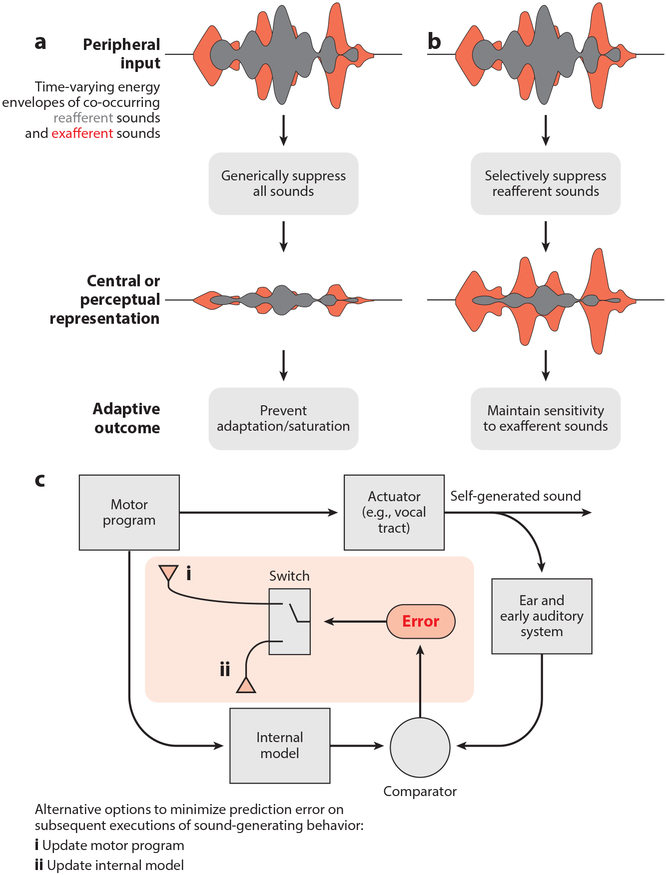Figure 1.
Adaptive roles for the modulation of auditory signals during behavior. (a) The auditory system processes environmental (exafferent; red) and self-generated (reafferent; gray) sounds often simultaneously. Generic suppression of all sounds during the execution of sound-generated behaviors can prevent saturation of the auditory system or adaptation, which can leave the auditory system temporarily insensitive following periods of sound generation. (b) In a more directed manner, the auditory system can selectively suppress the acoustic features of self-generated sounds while leaving neural processing of other sounds intact, allowing the brain (and the animal) to detect and react to important environmental cues, even during the production of self-generated sounds. (c) Suppression of self-generated sounds in the auditory system could reflect an internal model that is important for detecting performance errors. Errors, in turn, can be used in one of two ways to minimize subsequent errors. (c, i) First, errors can be used to update the motor program, thereby updating the sound-generating behavior, such as when learning to play a musical instrument. (c, ii) Second, errors can be used to update the internal model rather than the motor program, such as when learning the new sounds of one’s footsteps after walking from concrete to a leafy surface.

